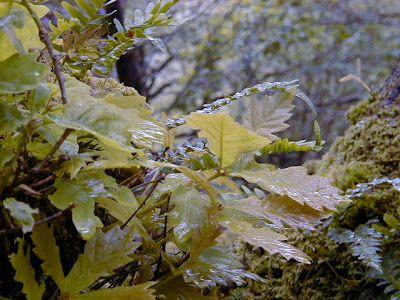
Most of our current mainstream mantras about trees and woodland have come to seem such emotionally-loaded and inaccurate bollocks, that it’s hard to find a shared clearing in which to start to describe things from my point of view.
Cutting down trees is wrong. So the story goes. They teach it in primary school. The woe and guilt for a lost Eden is cast upon the woodsman. We carry the blame for the sense of disociation felt by urban man. It is a motto as simple and shallow as ‘greedy farmers’.
The exercise of righteousness rather than the effort of understanding. We all do it.
I spent my childhood painfully negotiating ascent up garden trees that I only knew by species years later. A couple of birches were friendly. Two copper beeches were more of a challenge but were a whole dark, secret world inside. My brother had commandeered a huge sycamore for his fastness, but my giant was a many tiered elm, as intricate a climb as Jack’s beanstalk. We had built a platform on every possible level. Gazing from the top, I felt like Doctor Who, looking out over a gleaming, distant urban dreamscape, that was in fact Birmingham’s emergent Bull Ring. That tree fell spectacularly a few years after we had moved. The Bull Ring is being clawed down now too.
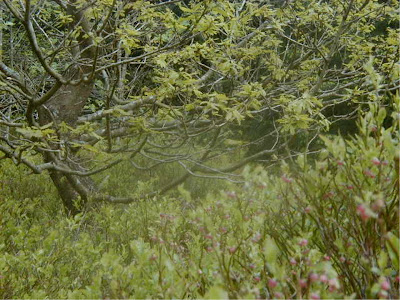
Apart from these early friends, trees were mainly just the bigger greenstuff that filled up the bits between buildings. The flat stuff was grass.
Having learnt a bit more since then, I try to remember that green is green to most, indistinguishable whether they are looking out over an intensive dairy sward or a long tended hay meadow.
I didn’t really take trees seriously until led there by the logic of my living.
I was after moss, which grows, as you know, between trees. Explanations are like branches, which can lead to thinner and thinner twigs, so let’s just accept that moss was a mission that led me down many a dark bank and into places long untrod.
This was in the Era of the Great Smother.
The Forestry Commission had eagerly planted as many bits of moorland and woodland that had been ransacked for the War, as it could acquire, with plantations, mainly of coniferous trees, and mainly of Sitka Spruce, at regular three foot intervals. Millions of them.
Literally millions were planted between 1955 and 1965.
Literally millions.
The government were acting out resolutions made during years of siege by ‘U’boat. Governments it seems, have a tendency to act out all the things they feel they should have done before the last war, as if the next one will be a re-run.
Elsewhere, demobbed male zeal wore out a plough an hour planting groundnuts.
Africa perhaps heals more quickly. We still look out on the ragged outlines of conifers long past their fell-by dates, largely ignored by a Forestry Commission that has put more effort into virtual forest models and remodelling its public image.
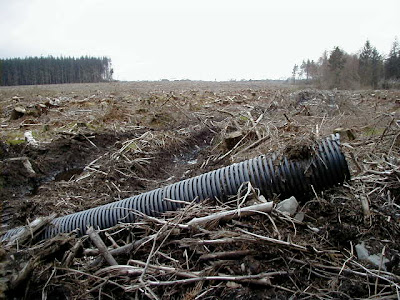
I ventured into forests that were still quietly swallowing peasant landscapes. There were Sitka dangling innocently over old lanes that led to moorland holdings. Bilberry and rowan still grew on field banks in the rides before the wall of Sitka blanketed them.
I saw these plantations grow, and then fall down from inside, trees leaning on each other, broken and creaking.
The Age of Harvesters arrived to swipe them off at the butt, leaving the stumps to be flipped into tangles by a lonely hymac, looking for new clay beneath the peat, for the contract planters to pick their way to, cramming a new generation of sitka clones into place.
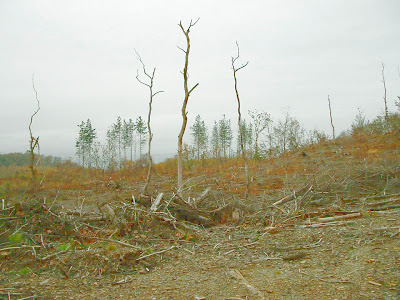
There were valley woodlands where some valiant ash regrowth was never beaten by planted Spruce and Larch, but most deciduous stools succumbed to the conifer shadow, and larger stems were ring-barked.
Western Hemlock will grow in semi-shade, so was favoured to ‘fatten up’ old woodlands. Unfortunately, it is vulnerable to stump-rot, which thrives in an ancient forest-floor. Nobody wanted the timber anyway, which was impossible to peel, prone to deep fissures, and wouldn’t even burn well.
It still occupies many woods, blocking the seedbed, and ready to seed itself if a chink in the canopy occurs. There were other disastrous exotics planted, but this is not the place to detail them.
This is not the dock of an ecological war-crimes trial.
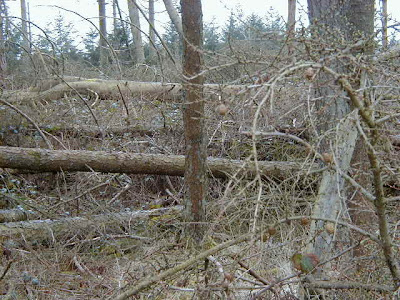
No comments:
Post a Comment